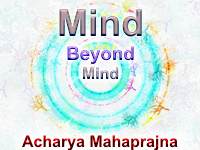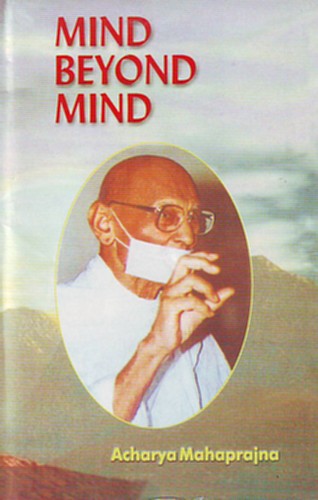
Is concentration on a single thought point better? Who is the ideal meditator?
Meditation means 'to see'. The meditator should have the competence to begin and stop a thought process at will. The best meditator is one who has developed this competence. On the other hand, one who continues to stick to a single thought point is mentally unsound. The basic factor in meditation is competence. If you have decided to meditate for an hour, and if you are a competent meditator, you need not keep a timepiece before you. You will automatically enter into the ideal state of meditation as soon as an hour has passed. The rise and fall of the meditation process can, be easily controlled by one who is competent. But if a particular thought point sticks to your mind, and if you are not able to bring it about or stop it, your mind does not possess the required competence.
You have said that one should 'see' and continue 'to see'. I tried to think over it, but failed. Why was it so?
It seems you simply tried to think and not to see the subtle vibrations in your body. Had you tried to see these vibrations, there would have been no need for me to answer your question. Your own experience would have been the answer to your question. When you begin to see something, the first thing you will come across is the gross form of the thing. Gradually you will come to see subtle vibrations in it. You have to attempt again and again, and I am confident, you will be able to perceive the subtle vibrations in your body. This needs a lot of practice and persistent effort.
Please explain Animesa Drsti? What are the essentials of 'seeing'?
When you start 'seeing' for meditation purposes, your eyes must be steady. Animesa Drsti means seeing with steady and wide-open eyes. It does not mean that you should not allow your eyes to twinkle. Whether your eyes remain wide open or twinkle is immaterial. It is true that you have to gaze for a considerable period of time and also to keep your gaze steady. It is said of Bhagavana Mahavira that he used to gaze at a wall for a long time. This may appear to be strange, but it is a fact. I have already said that when you begin to see a thing, the first thing you will come across is the gross form of the thing. But as you go on watching it, the gross form will begin to disappear and the subtle aspect of the thing will begin to emerge in your vision. A prolonged effort, determination, and a sense of certainty of the achievement of the objective are the three essentials of this exercise.
What is the purpose behind seeing things?
Seeing an object enables us to perceive the truth about it. Seeing produces two results: you develop your powers of perception and you begin to see the modifications of the object of perception. The exercise of seeing may also be done with reference to the self. This will result in self-perception.
Why is it necessary to develop the powers of perception? How does it become helpful in self-perception?
Suppose you have developed the power to see. This power will go on developing slowly. Once it has been developed, it is up to you to apply it to any objective you like. If you propose to know the nature of an object, you may apply it to this objective. Change of objective will in no way affect the competence you have developed. The same competence will do for any objective. It depends upon you which, objective you choose. But you will not be able to see anything without the required competence.
Take for example the teaching of language. We first teach the child the alphabet of the language we want to train him in. Once the child has picked up the alphabet, he begins to read books. He may read books on geography, history or any other subject. But if the child did not have the capacity to learn the alphabet, he will not be able to read anything.
Let us try the Preksha meditation. It is an exercise in seeing with the eyes. The exercise will not produce immediate results. But it is certainly develop your power of perception.
Why does a great soul choose its next birth and for what purpose?
The soul is born in this world in the form of a living being. Nature decides who its parents will be. This is the first thing. Besides it's heredity, the soul has to develop its own inherent powers. That is the second thing. These are the two factors in the birth of a great soul. This has been the case in the past, and it is true even today.
What is the chief centre from which the Prana force flows?
The Prana force is the vital force in the body. It is an electric current and it sets the entire body to motion. This current flow in the whole of the body, but its chief flow is contained in the Susumna channel.
What is the difference between oxygen and the Prana force?
There are three nadis (channels), which affect the Prana force. The current passing through one of these channels is called the Surya Svara. This is the flow passing through the Pingala channel. The current of Prana flowing through the Ida channel is called the Candra Svara. The current passing through the central Susumna channel is a mixed current. These three channels carrying the Prana force meet at a point behind the eyebrows. Every one of these flows has its own function. The middle current is helpful in concentration and Samadhi. There is a purpose in the practice of long breathing. It is effective in activating the flow in the Susumna channel. A prolonged practice of long breathing activates the Susumna channel. It also makes concentration easy. The Kapalabhati Pranayama is also effective in this activating of the Susumna.
Does each and every activity we do involve the release of energy from the body?
The soul and the pudgalas are strange bedfellows and their combination results in the release of energy. Energy does not release itself automatically. The structure of the atom includes continuously moving electrons and neutrons. Their movements do not by themselves release energy. Natural activities do not involve a loss of energy. Energy is lost only when the soul comes in contact with something alien to it. There is no loss of energy in pure Upayoga. For example seeing and knowing are pure Upayoga and they do not involve any loss of energy. Energy is lost when Upayoga gets mixed up with the sense organs, mind, and words. Mati Jnana and Sruta Jnana are possible only in such combinations. The former is knowledge derived through the sense organs and the mind and the latter in knowledge derived through words. This combination is Yoga and Yoga means the loss of energy. But Upayoga restricted to pure knowledge or consciousness does not involve any loss of energy. The combination of pure consciousness with the mind and the sense organs results in the loss of the energies of the mind and the sense organs also. There is no duality in pure consciousness. The state of thoughtlessness begins as soon as one becomes free from self-negligence, which influences all the stages of spiritual development.
 Acharya Mahaprajna
Acharya Mahaprajna

